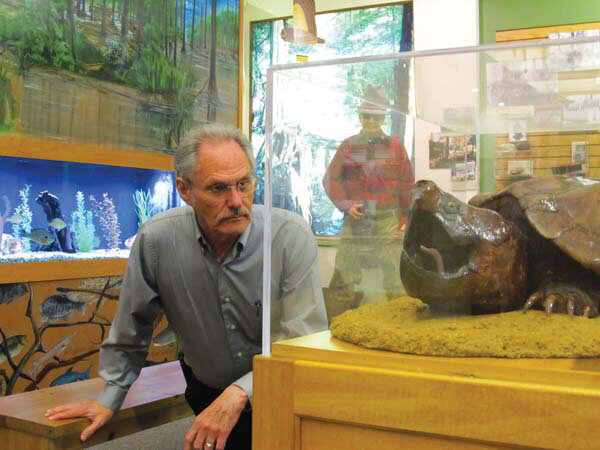
“A society is defined not only by what it creates, but by what it refuses to destroy.”
John Sawhill, former President and CEO The Nature Conservancy
The last “wild” river
The Hatchie River is the longest free-flowing tributary of the lower Mississippi, totaling 238 miles and contains the largest forested floodplain in Tennessee.
The Hatchie River Museum highlights this last “wild” river and it’s eco systems. The river is considered “wild” because it has never been altered by man. Its unique eco system is still in tact and provides habitat for more than 100 species of fish including 11 species of catfish, possibly the most of any North American River; 50 species of mammals; 35 species of mussels; 250 species of birds including migrating birds; along with many reptiles, amphibians and invertebrates.
Inside the Hatchie Room
Alligator snapping turtles are the largest freshwater turtles in North America and one of the largest turtles in the world. While the closely related common snapping turtle rarely exceeds 40 lbs., the alligator snapper can reach a hefty 240 lbs. It is believed they live between 80 to 120 years in the wild.
You’ll also see fresh water aquariums filled with fish native to the river, such as catfish and bream.
The Scenic Hatchie River
The Hatchie River and unique floodplain that surrounds it was once the hunting grounds of the Chickasaw Indians. The area is preserved now as a waterfowl refuge and part of the U.S. Fish and Wildlife Services.
The Hatchie National Wildlife Refuge encompasses more than 11,000 acres and the Scenic Hatchie River.
The Hatchie River has been named by the Nature Conservancy as one of the 75 great places to save.


